
© FreshPaint – AdobeStock
What’s Trending Next? A Dozen Home and Design Ideas for 2020
From building and decorating materials to room sizes, colors, and lighting, gift your clients with the knowledge gleaned from crystal ball gazers as we look ahead to 2020’s trends.
Almost everyone enjoys making predictions for a new year—and certainly for a new decade. How about cooking appliances that tell you how to roast and broil to perfection? Or, better yet, new homes that come with a personal chef?
REALTOR® Magazine asked our favorite real estate trend watchers and influencers what to expect in 2020 and beyond. For starters, most agree that gray is on its way out, while deep hues are becoming the stars in interior paint. And more homeowners are following the craze of decluttering and tidying up popularized by Marie Kondo so they can focus on experiencing joy in their home.
While some fads are natural evolutions and others are more far-fetched, we’ve whittled it down to a dozen that are sure to inspire your buyers and sellers alike. Plus, don’t miss five up-and-coming kitchen trends that are bound to spark interest and maybe a remodel.
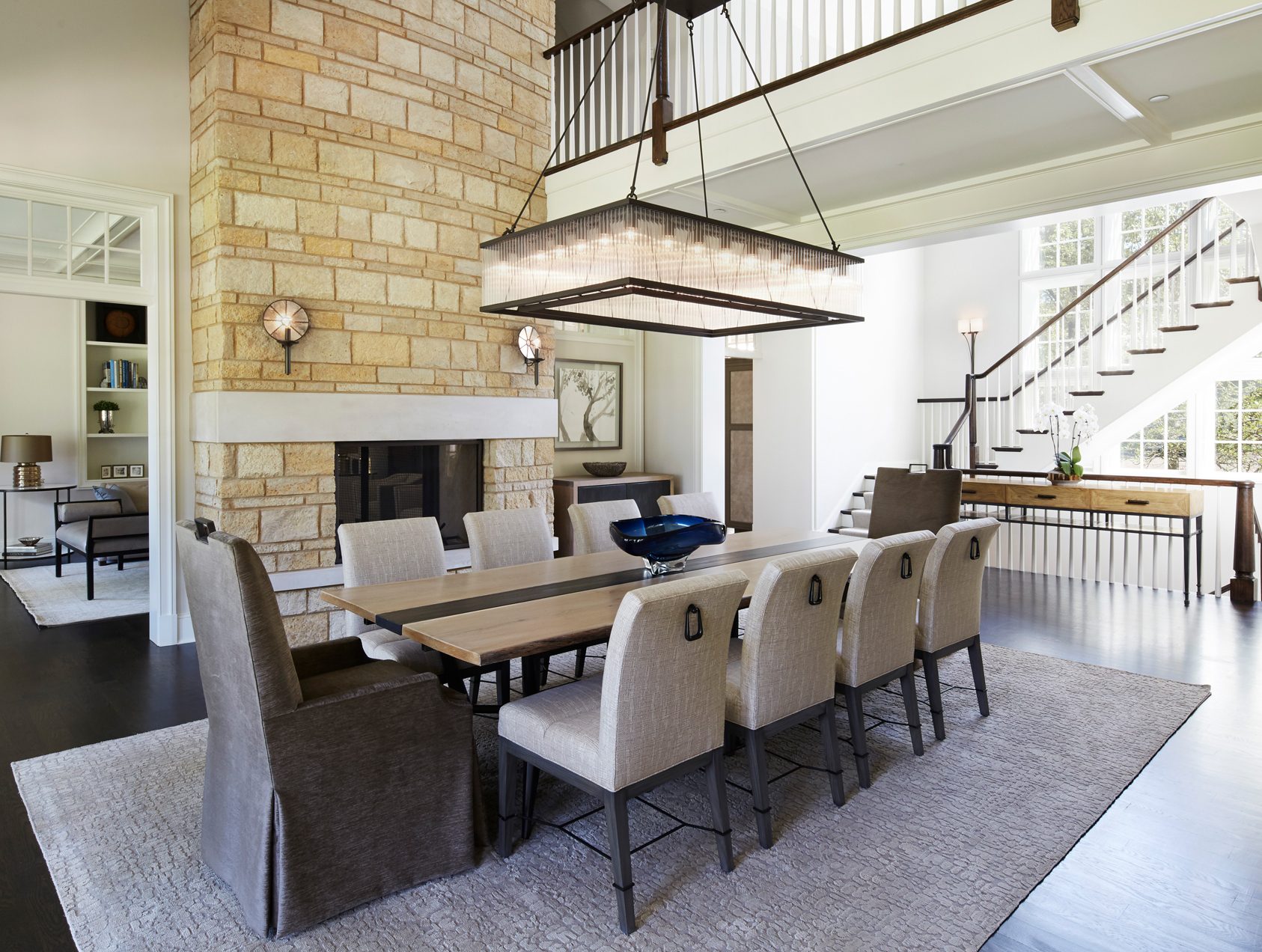
© Morgante-Wilson, Werner Straube Photography
1. Comfortable Dining Rooms
Homeowners have decided they don’t want to give up their dining rooms—that’s in the past. Now they want dining rooms to be less formal and more functional, says architect Elisa Morgante of Morgante-Wilson in Chicago. The best way to do this is by investing in a multipurpose table that can take wear and tear, comfy chairs with high backs and armrests, and washable fabrics. Fun light fixtures are replacing delicate ones, and some traditional dining room furnishings are disappearing—such as china cabinets used for fancy entertaining, says real estate broker Jennifer Ames, partner at Engel & Volkers in Chicago.
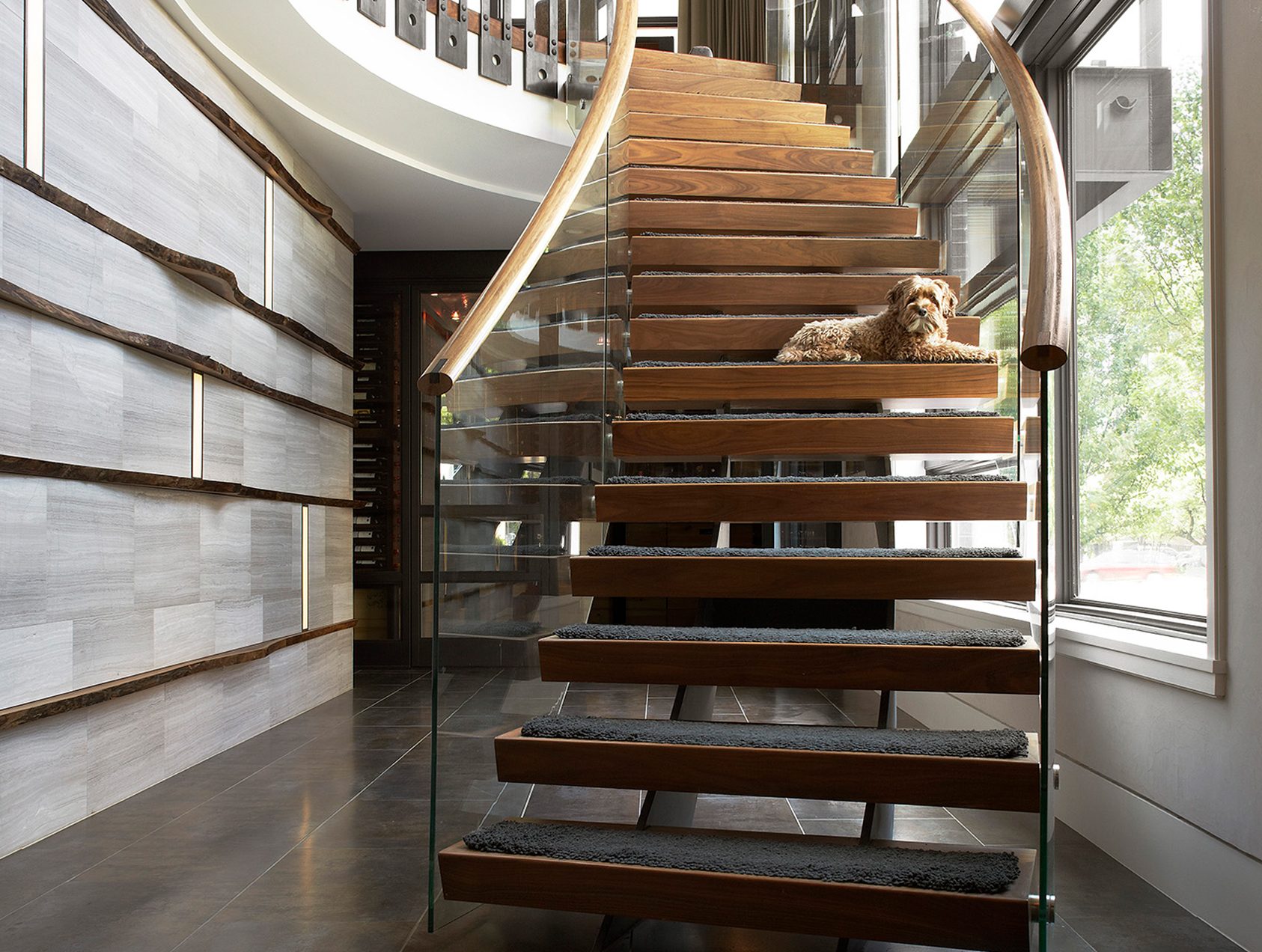
© Morgante-Wilson, Werner Straube Photography
2. Fabulous Foyers
Homeowners know the importance of exterior curb appeal, but now they’re taking advantage of the foyer as another opportunity to impress, says Liz Brooks, vice president of sales and marketing for Belgravia Group, a development firm in Chicago. At Belgravia’s condo building Renelle on the River, foyers are “gracious” in size with walls to hang a mirror or art or offer views through to a living room and beyond. The architects at Morgante-Wilson like foyers in multilevel homes to incorporate a dramatic stairway with wider or more curved treads, risers, and railings fabricated from novel materials. Some include a clerestory or skylight at the top to flood the area with light, says Morgante.

© Joaquin Corbalan – AdobeStock
3. Mass Timber
Mass timber is beginning to receive recognition as a smart building material because its production generates less carbon emission than steel or concrete, says sustainable architect Nathan Kipnis of Kipnis Architecture + Planning in Evanston, Ill. The material is also fire-resistant and strong and performs well during seismic activity, according to the Mass Timber Code Coalition. Plus, it’s cost-efficient and can be constructed faster since it’s prefabricated, and it can be used on walls, floors, and roofs—even in innovative sculptural forms. “With mass timber, there’s no waste on a site that must go into a landfill,” says Sam Ebersol, general manager of Mid-Atlantic Timber Frames, a heavy timber construction company in Paradise, Penn.
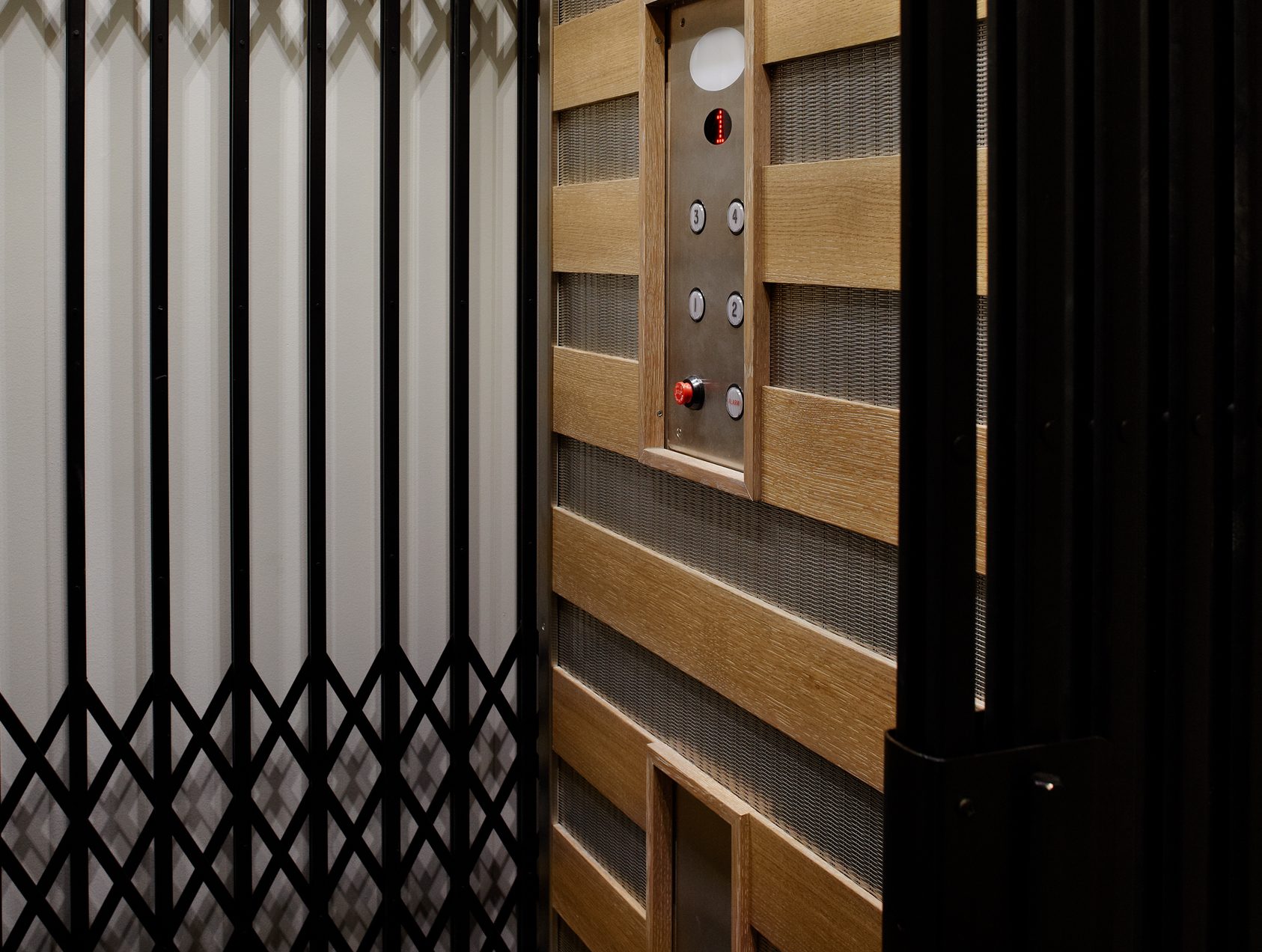
© Morgante-Wilson, Werner Straube Photography
4. Home Elevators
As the baby boomer population ages, first-floor master bedroom suites are becoming more popular. But not every house or townhome provides space to include them. In cases where a home has multiple levels, an elevator provides help for those who have trouble climbing stairs, says Kipnis. He recommends building the feature in new homes, or at least leaving adequate space—3 1/2 feet by 4 1/2 feet on each level for future installation. The cost will vary depending on materials, finishes, and an electrician’s hourly labor charge, but the total expense might run about $15,000 per floor.
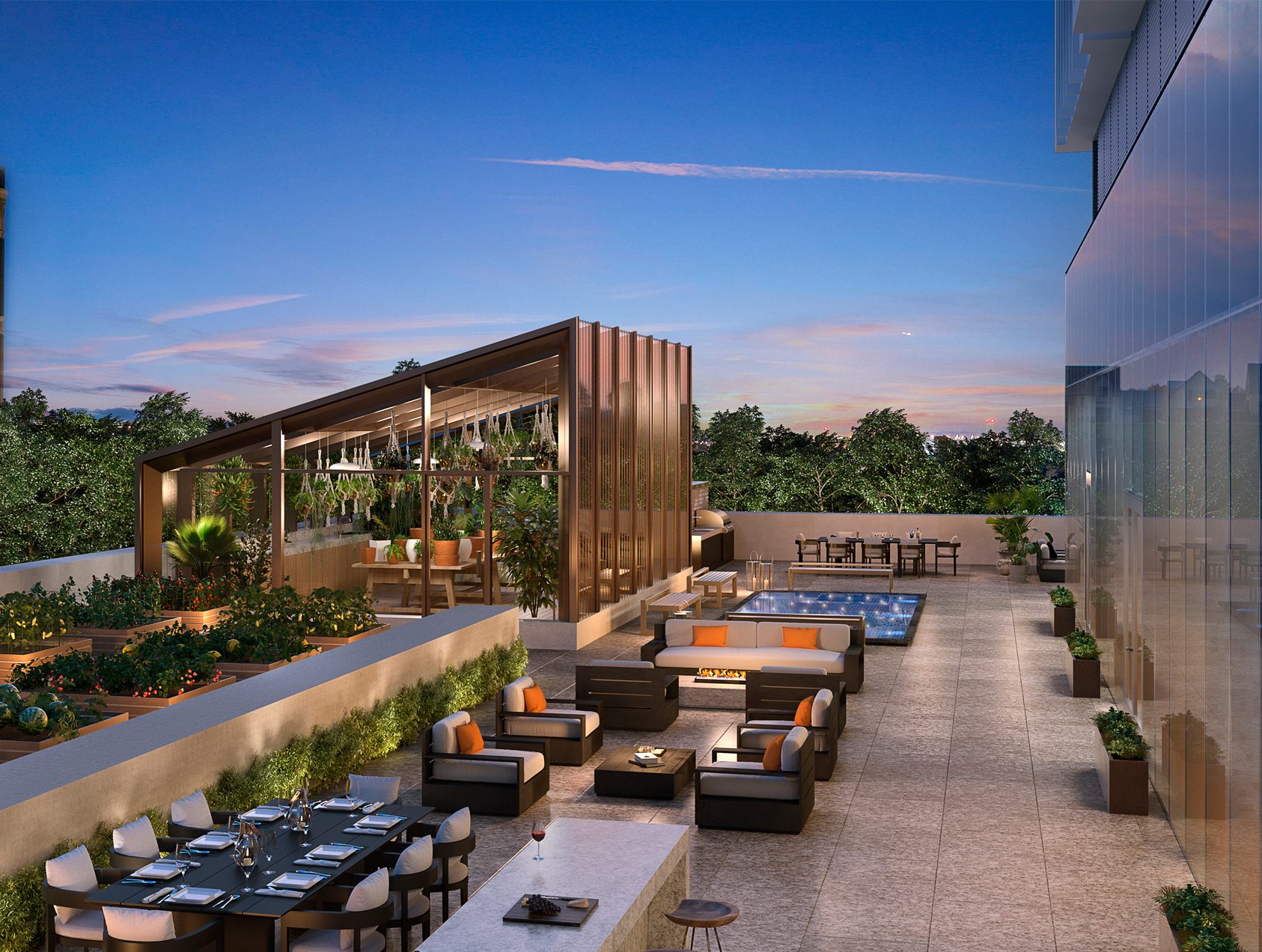
© ARX Solutions, Dranoff Properties
5. Communal Oases
Developers of multifamily buildings now recognize that homeowners want a green space to garden, even after they’ve vacated suburban homes. And while rooftop gardens have become more prevalent, other green spaces are popping up, too, as more developers note their health benefits. Carl Dranoff, founder of Dranoff Properties based in Philadelphia, planted a two-level garden at his newest project, Arthaus Condominiums in downtown Philly, which will include a greenhouse to grow orchids, outdoor plots to raise vegetables, flowers, and herbs, and an extended lawn off a communal event space. A horticulturalist will offer residents professional expertise. The architecture and interior design firm CetraRuddy in New York has focused on adding greenery in another way—through large terraces that bring more light and air and a sense of space into the interior of its ARO building in Manhattan, as well as its surrounding block. Such tactics are more important in denser urban environments, say the building’s principals, Nancy Ruddy and John Cetra.
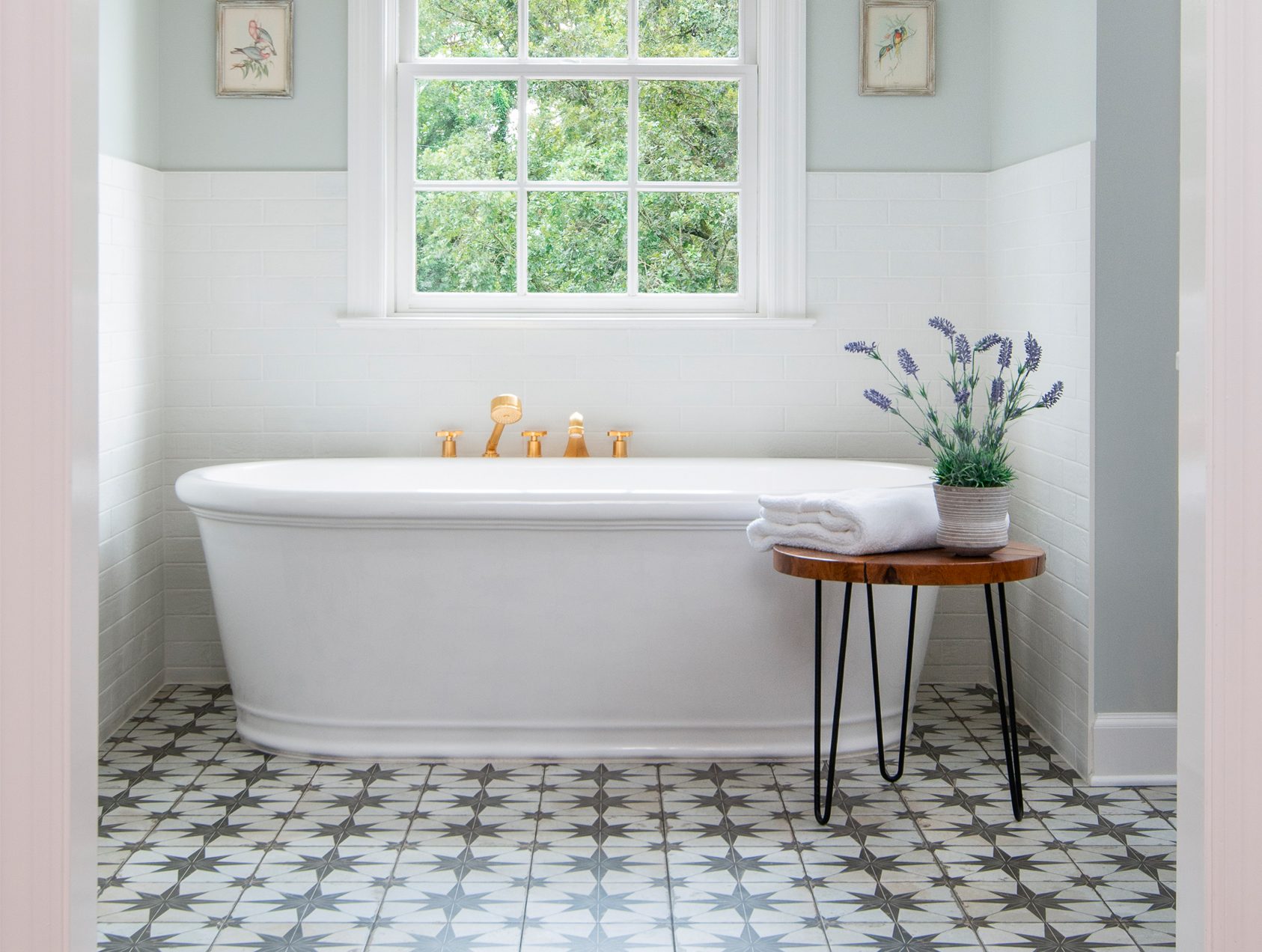
© Kristie Barnett, The Decorologist
6. Graphic Bathroom Floors
Boldly patterned floors are adding a spark of interest in bathrooms that were recently trending very monochromatic and spa-like. Staging and design expert Kristie Barnett, aka The Decorologist, in Nashville, took this approach in one client’s homes. She used an encaustic, graphic floor tile, similar to those that show up along kitchen backsplashes. But Barnett adds one caveat for bathrooms: “When choosing this kind of pattern, it should be the lead actor in the show while other elements play supporting roles. A bathroom should still be a personal sanctuary, and too much visual noise could weary the eye.”
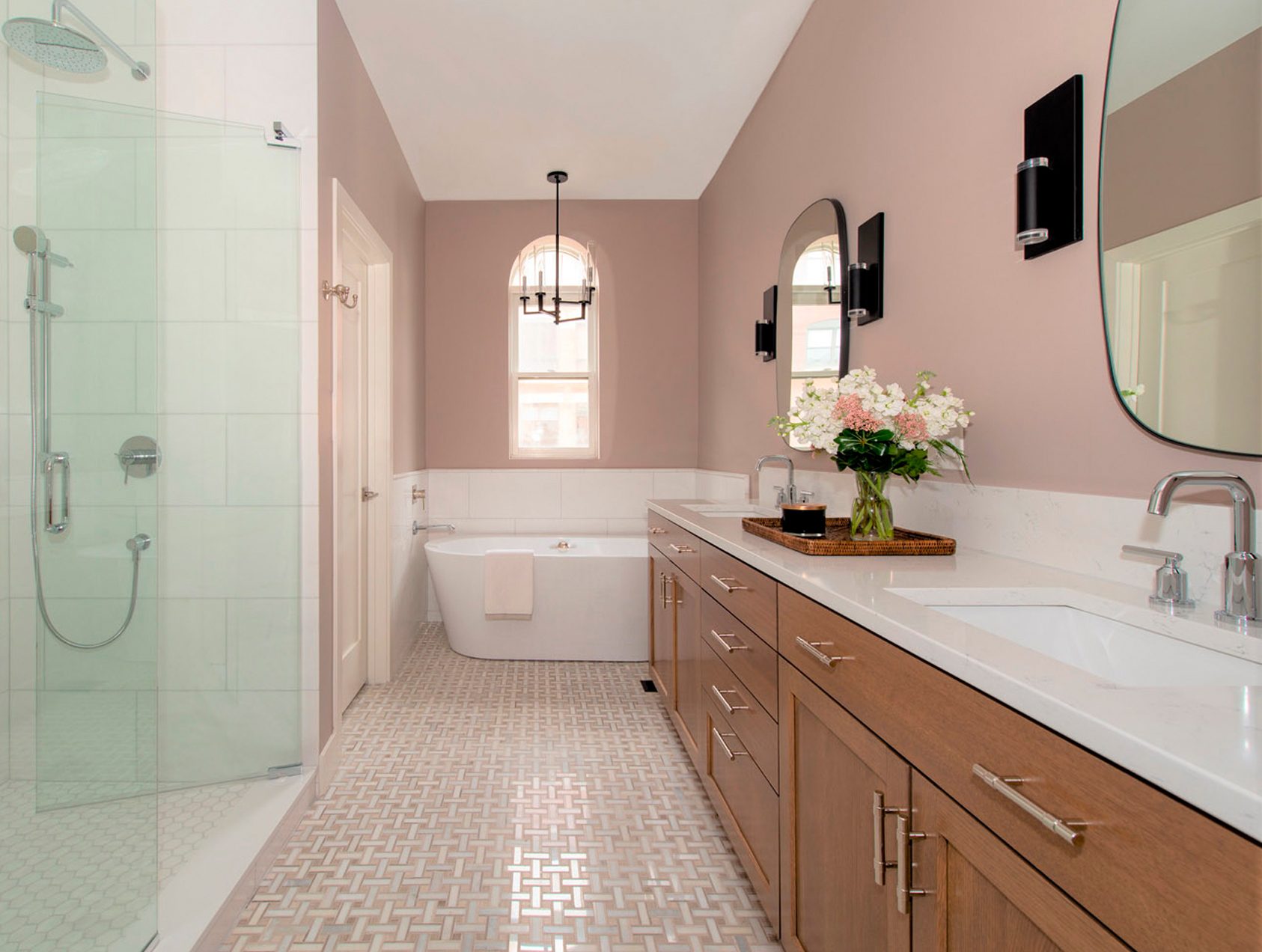
© Renovation Sells
7. Remodeling Before Listing
Many homeowners don’t want to take on the work and extra cost of fixing up their home before they list. Yet many buyers don’t want to invest in a home where they know there are walls to paint, countertops to replace, and floors to resand. Consider the latest trend that helps remove buyer objections: a contractor who tackles the work and fronts the cost or who partners with a firm that provides financing. Sellers then pay back the funds at closing. The big reward usually is a higher price and speedier sale, says Mike Valente, a licensed general contractor who works with many homeowners through his Renovation Sells firm in Chicago. Compass, a national real estate firm, has established its Compass Concierge service to deliver a similar revamp option. A calculator on the company’s website helps suggests how much sellers might spend.
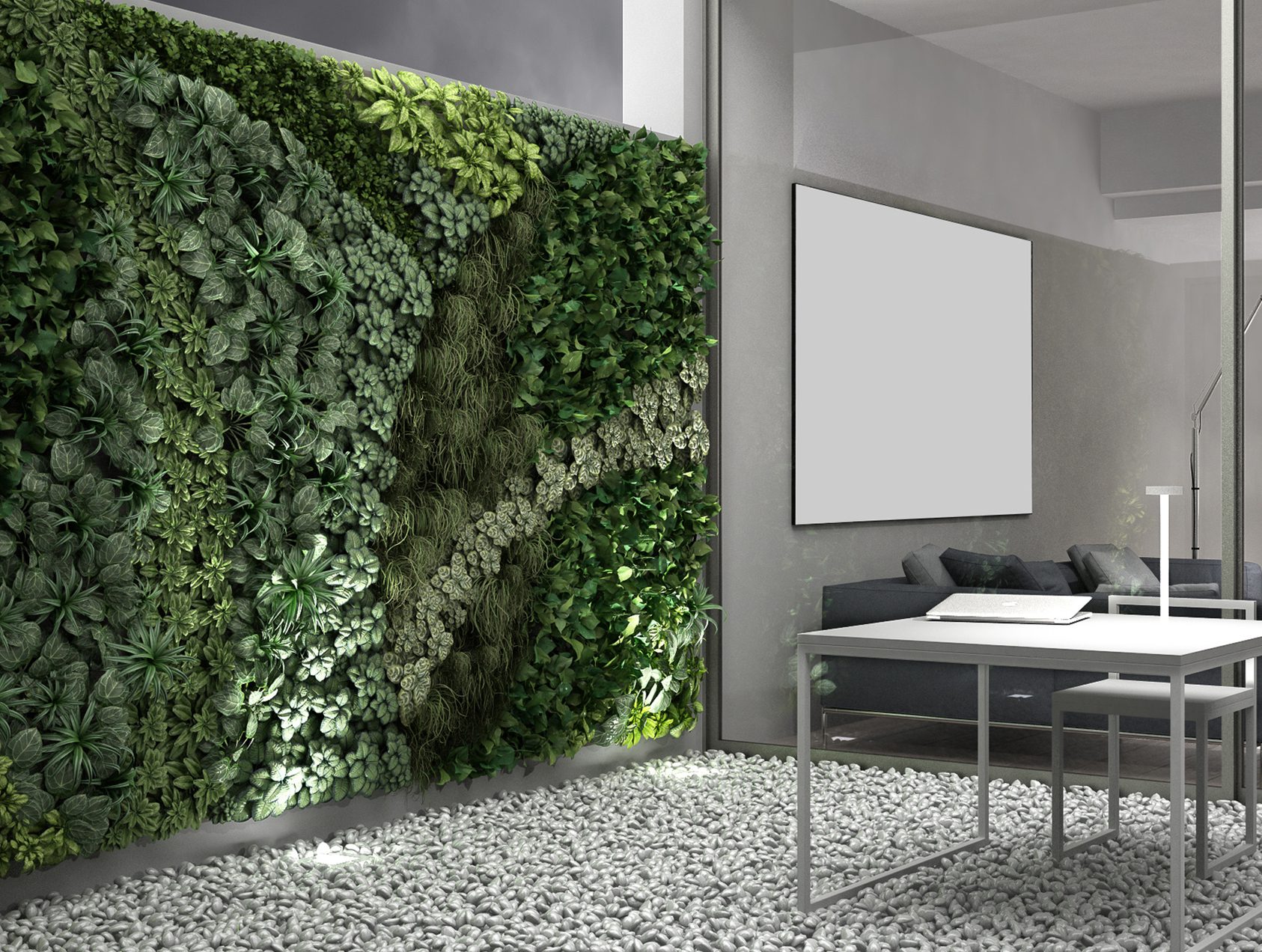
© ArchiVIZ – AdobeStock
8. Living Walls
For homeowners downsizing to a property with a smaller yard—or for those who have trouble bending down—living walls offer a way to connect to greenery by growing plants, vegetables, and herbs along the walls of a home, garage, or outbuilding. Landscape designer Michael Glassman of Michael Glassman & Associates in Sacramento, Calif., says, “Gardening is going up rather than out for aesthetics and consumption.” He recommends vines like star jasmine and creeping fig, edibles such as tomatoes and cucumbers, and herbs like rosemary and basil. “Plant walls” resembling art are also showing up inside, especially when homeowners don’t have an outdoor space, says David Dynega, CEO of Detail Renovations in Great Neck, N.Y.
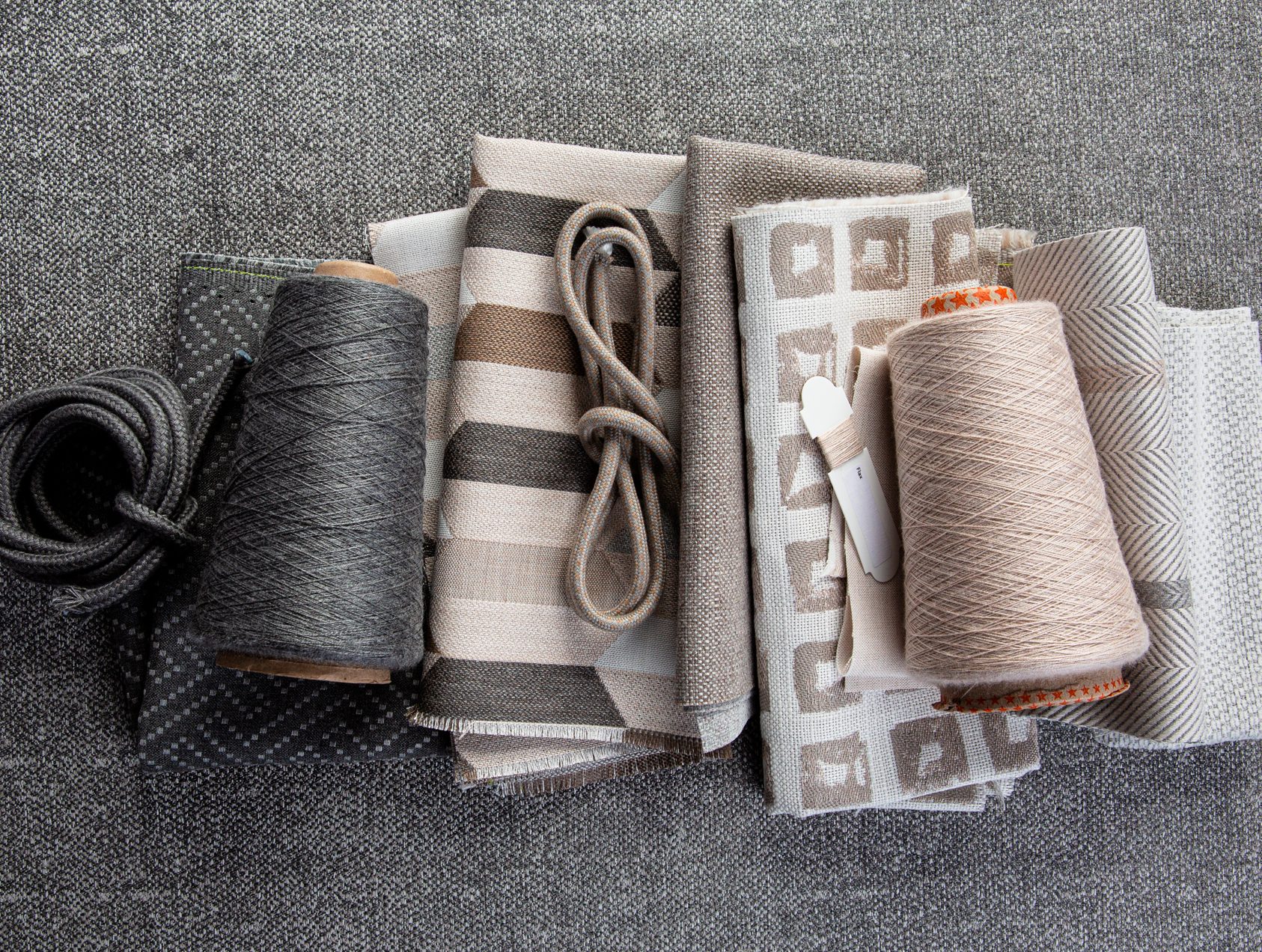
© Sunbrella®
9. Better Looking Performance Fabrics
Instead of looking only at fabrics that appeal for color, pattern, or texture, homeowners want materials that will last and perform—hence, the name they’ve earned: performance fabrics. Originally, they were designed for outdoor spaces, where the sun, wind, water, or inclement weather took their toll. But as the fabrics have become more attractive, designers and homeowners have started using them indoors, where they can withstand the wear and tear of pets and people, says Chicago designer Rebecca Pogonitz of GOGO Design Group, who’s a big fan of the trend. Greg Voorhis, executive design director of Sunbrella, well-known for its performance fabric designs, says his firm is seeing the rise of more textured chenilles, boucles, and chunky wovens. “They bring new energy into familiar spaces without sacrificing comfort or durability,” he says.
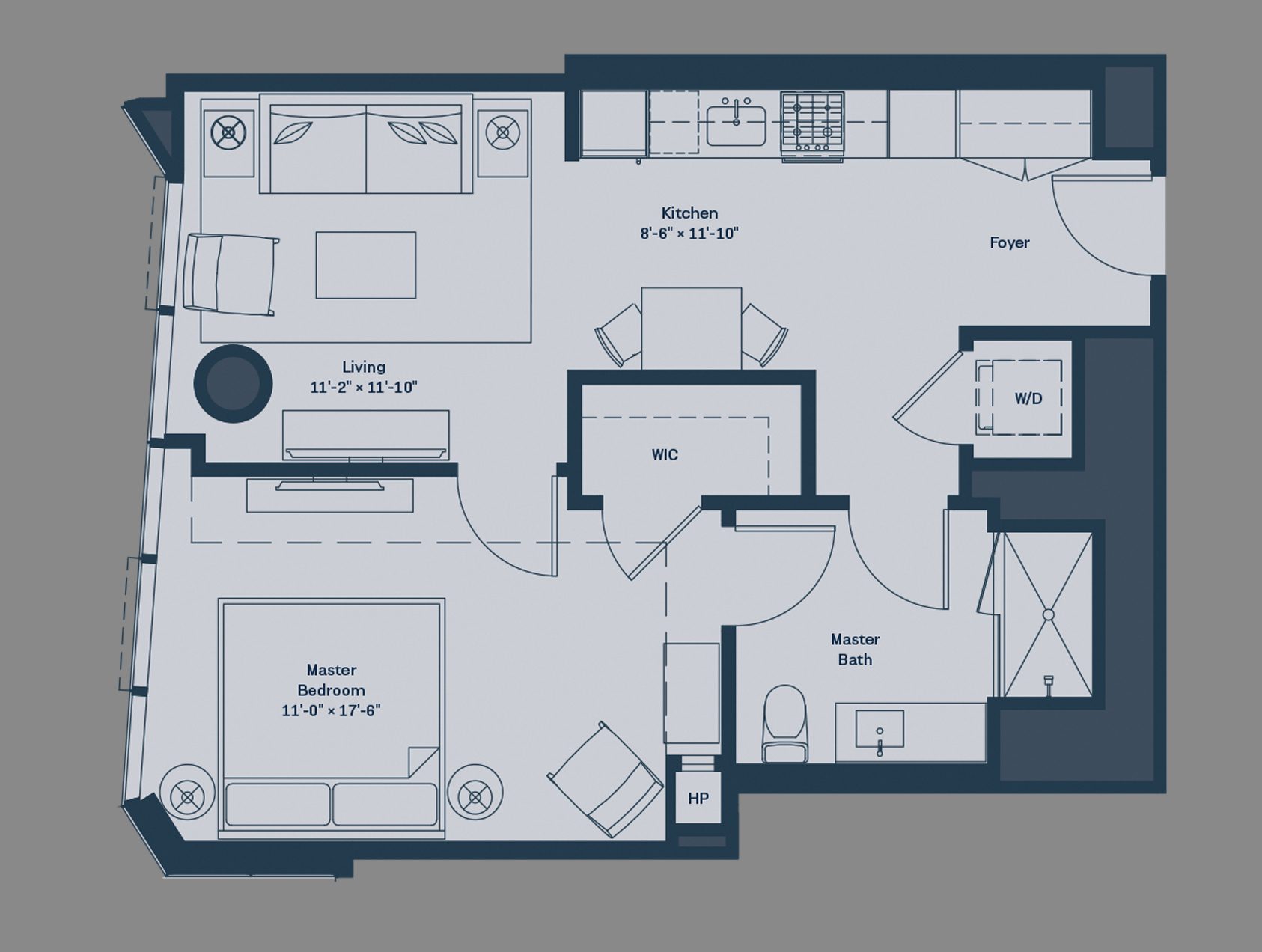
© Lendlease
10. Downsizing Homes, Rooms, and Ornate Features
The McMansion craze has been dead for years, resulting in more homeowners looking to downsize and millennials never planning to go big. “They favor experiences over owning large high-maintenance, high-cost homes filled with lots of stuff,” says Ames. “It’s the Marie Kondo version of shedding stuff.” Many home shoppers are also looking for simpler architectural detailing that pares maintenance and cost, as well as fewer rooms that will go unused, Ames says. Lendlease, a development company that created the new Cirrus building in downtown Chicago, heeded this mantra when it planned its range of scaled-down units and beefed up its many shared amenity spaces, says Ted Weldon, executive general manager. Sheri Koones’ new book, Downsize: Living Large in a Small House (The Taunton Press, 2019), offers an abundance of information for homeowners looking to pare down
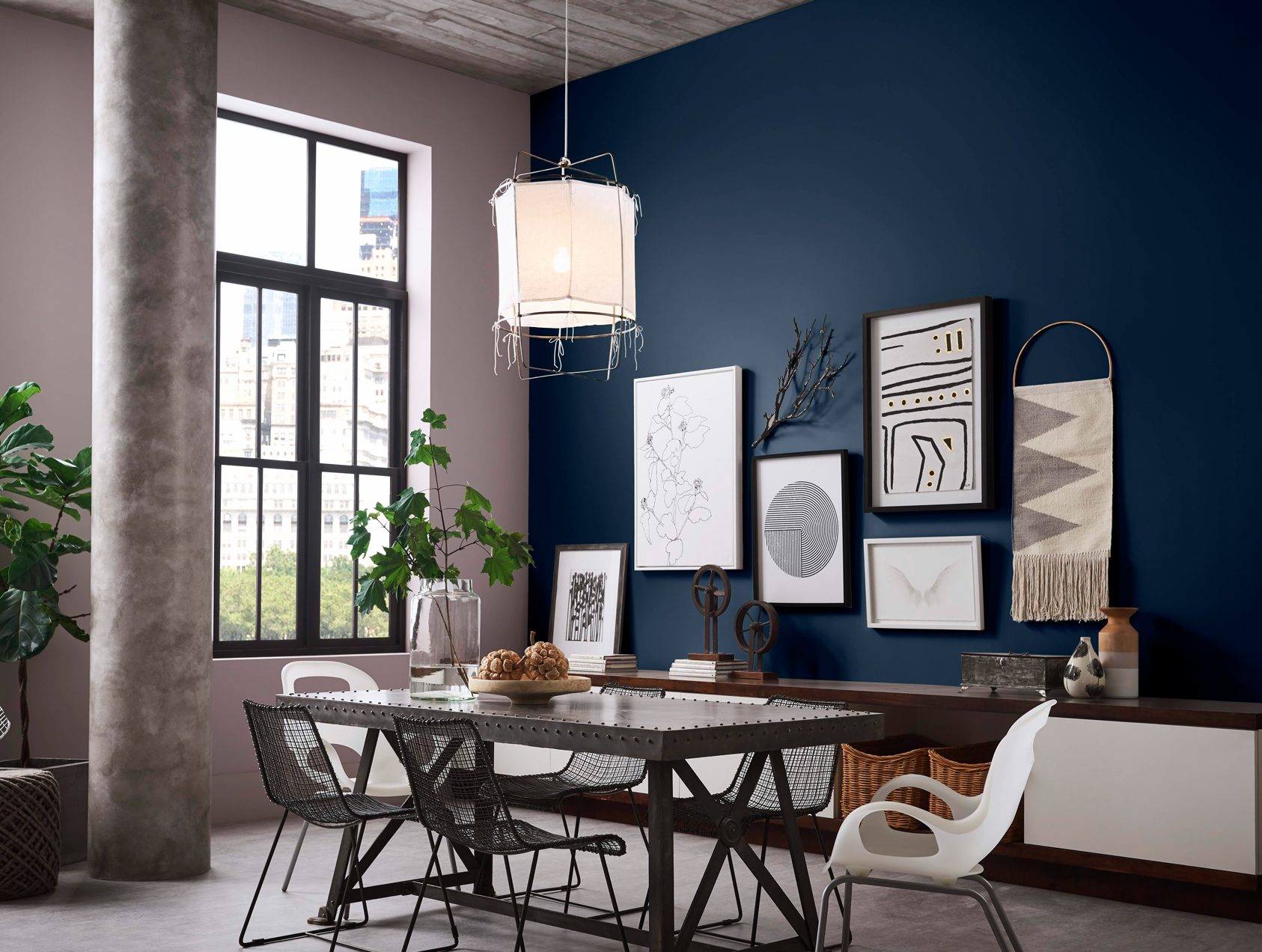
© Sherwin-Williams
11. Deeper Hues
You can read into the emerging palette of deep hues a desire to counter global unrest, as some designers speculate, or you can take the colors as an antidote to years of pale grays. Either way, the darker hues are coming on strong. Pantone anointed “classic blue”—a very royal tone—as its color of the year. Could it be a nod to the Sussexes or appeal of The Crown? Sherwin-Williams’ Sue Wadden, director of color marketing, touts her company’s “naval” (SW 6244), “anchors aweigh” (SW 9179), “ripe olive” (SW 6209), and “dard hunter green” (SW 0041) as choices to visually mitigate stress. Another emerging trend: monochromatic rooms, donning a single paint color on the walls, trim, and ceiling.
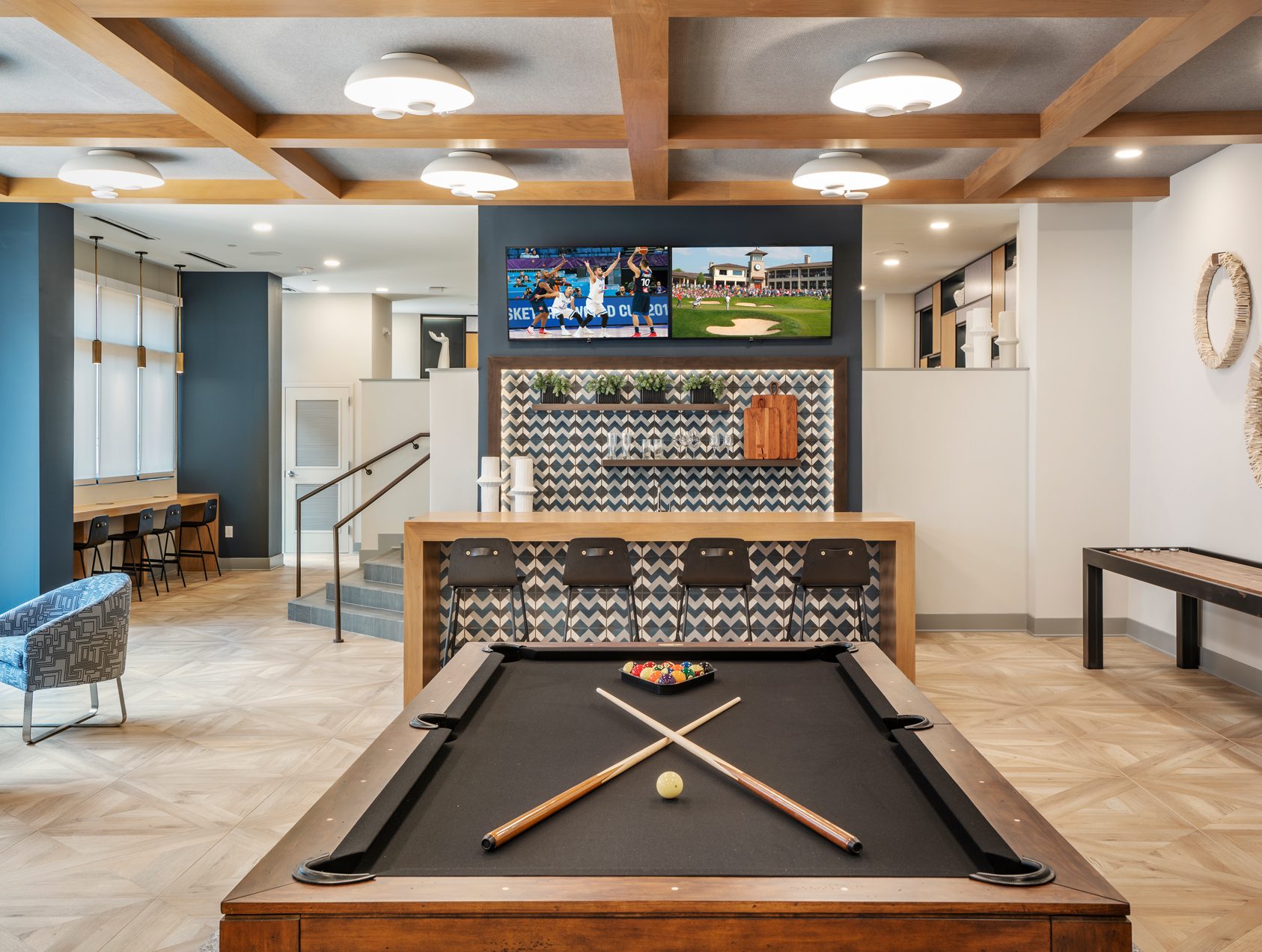
© Mary Cook Associates, Toll Brothers Apartment Living
12. Hipsturbia
Live/work/play has become a way of life for millennials who aren’t willing to compromise when they have children. As they move to the suburbs for more space, they choose communities with urban amenities—thriving walkable downtowns with dining, shopping, entertainment, public transportation, and jobs. “Success has a way of spreading,” the Urban Land Institute noted when it coined the term “hipsturbia” in its Emerging Trends in Real Estate 2020 report, says Mary Cook, founder of Chicago-based Mary Cook Associates. “Every development we work on today is located in areas that fit this formula and foster community interactions,” she says. One example is Toll Brothers’ Apartment Living Oleander building outside Atlanta, which offers residents flexible community spaces equipped with state-of-the-art technology to accommodate events, co-working spaces, and more. The building sits on Emory University’s expanding Executive Park campus near new medical complexes designed to attract health care professionals.
Top 5 Kitchen Trends
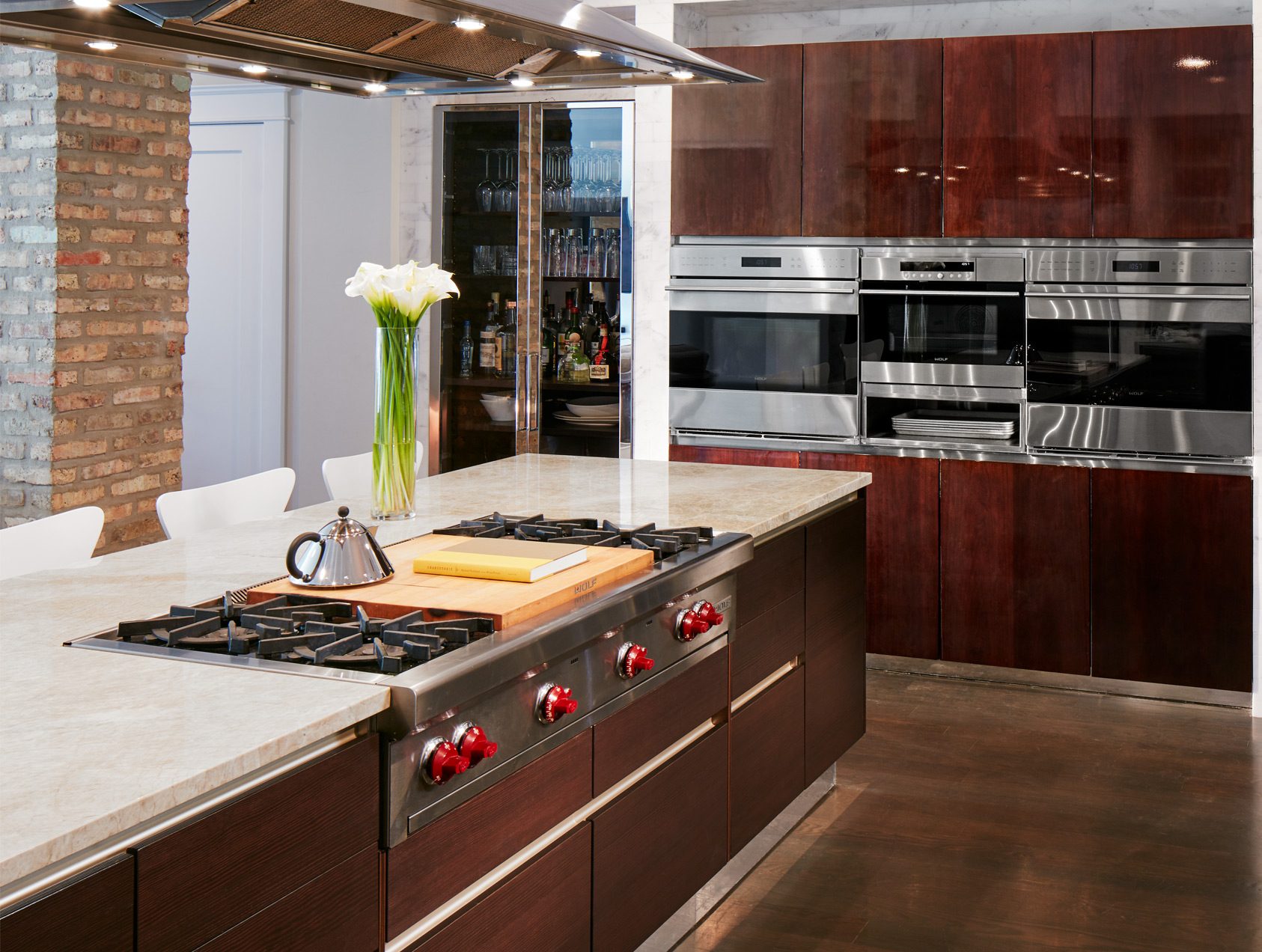
© Dave Burk, de Giulio Kitchen Design
Instead of adding a 13th trend to the list, we decided to give kitchens their own section because they remain the number one focus in the home. The new fads being cooked up are giving this room an update in style, appliances, materials, and colors, as well as a way to enhance surrounding spaces since many are part of the open plan living-dining-kitchen area. While white may still dominate cabinets and countertops, other colors and materials are popping up—so are new technologies that help homeowners prepare food more effortlessly and healthily. Here are five kitchen trends to watch in 2020.
- Materials. GE appliances are showing an uptick in more white and black matte finishes as well as a new look of glass-covered stainless steel fronts that’s emerging. These new materials fit in better with other room furnishings, too, says Marc Hottenroth, executive director of GE’s industrial design division. Also showing up in kitchens is a greater mix of metals, such as brushed bronze and copper to help freshen appliances, which generally last about 10 years.
- Technology. Voice assistants now read recipes and cooking directions for homeowners so they don’t have to turn cookbook pages with flour-coated fingers. Appliances with gourmet guided cooking technology provide recipes and tutorials through an app that communicates with the appliance via Bluetooth. The chef no longer has to turn knobs to adjust temperatures. For instance, a rack of lamb might be roasted, then finished with a broil, which would all be adjusted automatically. And a new wall oven with hot air-fry capability is offering a healthier alternative to deep frying.
- Function. A new kitchen island is emerging, which combines an island with a dinette, according to Gena Kirk, vice president of design at KB Home, a national home builder based in Los Angeles. The island features a place to prepare meals at one height and an additional countertop that slides out at a lower level for people to eat around when desired. Scaled-down appliance sizes are becoming popular in smaller open-plan homes and condos. In its new Cirrus building, a 47-story tower going up on Lake Michigan, Lendlease camouflaged appliances behind millwork paneling, says Linda Kozloski, creative design director. The company also went with smaller, more European-size appliance choices because of the units’ smaller sizes, which helps counter rising construction costs. Example: a 24-inch-wide refrigerator was selected instead of a 48-inch model.
- Workspace. After so much buzz about whether to stay with granite or switch to quartz or quartzite, KB Home offers another idea: natural wood cutting boards for a portion of the countertop surface. The wood area provides a convenient workspace without having to pull out a cutting board or leave one out all the time.
- Details. Chicago kitchen designer Mick De Giulio, principal of de Giulio Kitchen Design, is introducing design character in novel ways to surprise and contradict. One example includes the hand-hammered finish on a stainless steel Bacifiore sink to add sophisticated sparkle instead of a plain-Jane stainless or ceramic white model. Another is the instillation of polished stainless steel toe kicks at the bottom of cabinets that hardly show the dirt, scuffs, or mess that painted wood ones do.
Trends are meant to inspire rather than make agents and their clients feel the need to rush into a renovation to make a house hip or more marketable than another. These points represent what’s new or coming through the pike. In the future, for example, there may be more technology that will warn homeowners about natural disasters before they occur. And before clients invests in any updates, make it clear that it’s best to do so for personal enjoyment rather than to boost salability.
 New listings delivered to your inbox
New listings delivered to your inbox 

